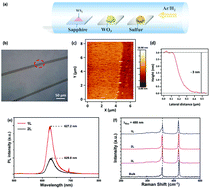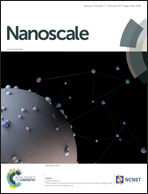Large-area tungsten disulfide for ultrafast photonics
Abstract
Two-dimensional (2D) layered transition metal dichalcogenides (TMDs) have attracted significant interest in various optoelectronic applications due to their excellent nonlinear optical properties. One of the most important applications of TMDs is to be employed as an extraordinary optical modulation material (e.g., the saturable absorber (SA)) in ultrafast photonics. The main challenge arises while embedding TMDs into fiber laser systems to generate ultrafast pulse trains and thus constraints their practical applications. Herein, few-layered WS2 with a large-area was directly transferred on the facet of the pigtail and acted as a SA for erbium-doped fiber laser (EDFL) systems. In our study, WS2 SA exhibited remarkable nonlinear optical properties (e.g., modulation depth of 15.1% and saturable intensity of 157.6 MW cm−2) and was used for ultrafast pulse generation. The soliton pulses with remarkable performances (e.g., ultrashort pulse duration of 1.49 ps, high stability of 71.8 dB, and large pulse average output power of 62.5 mW) could be obtained in a telecommunication band. To the best of our knowledge, the average output power of the mode-locked pulse trains is the highest by employing TMD materials in fiber laser systems. These results indicate that atomically large-area WS2 could be used as excellent optical modulation materials in ultrafast photonics.



 Please wait while we load your content...
Please wait while we load your content...